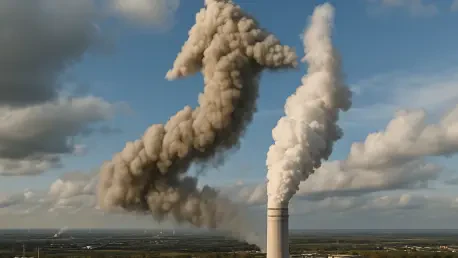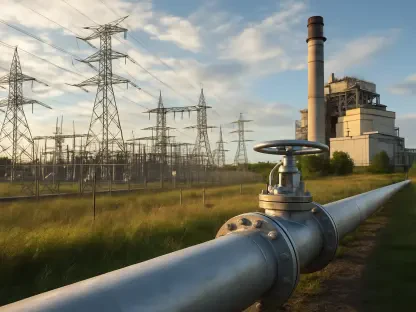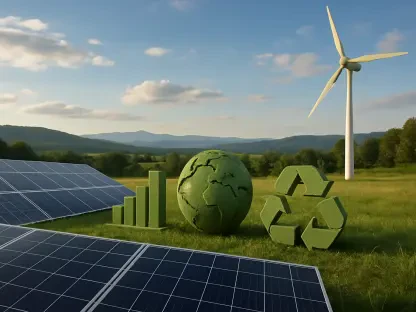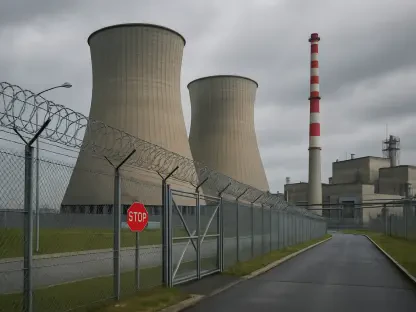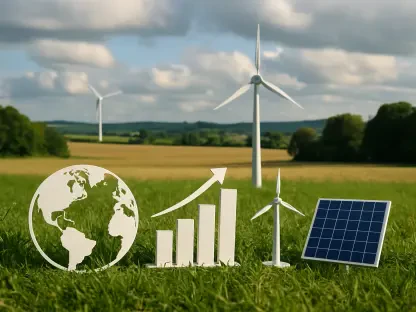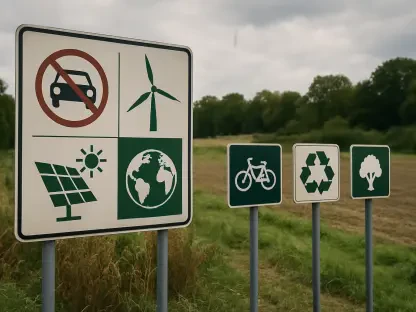A staggering report from the World Meteorological Organization (WMO) has revealed that atmospheric carbon dioxide (CO2) levels surged to an unprecedented 423.9 parts per million in 2024, marking a record annual increase of 3.5 parts per million, highlighting a pressing global challenge. This alarming statistic not only surpasses all previous records but also underscores the accelerating pace of climate change driven by human and natural factors. This roundup gathers insights, opinions, and actionable tips from various environmental experts, climate scientists, and policy advocates to dissect the causes, impacts, and potential solutions to this escalating crisis. The purpose is to present a comprehensive view of the issue, comparing diverse perspectives on how to address this urgent environmental milestone and inspire collective action.
Unpacking the 2024 CO2 Surge: A Global Wake-Up Call
The dramatic rise in CO2 levels, as reported by global monitoring agencies, has sparked widespread concern among climate researchers. Many emphasize that this spike, the largest since measurements began over six decades ago, reflects a troubling trend of increasing greenhouse gas concentrations. Insights gathered from multiple scientific bodies suggest that without immediate intervention, such surges could become the norm, pushing global temperatures to dangerous thresholds.
Environmental analysts from various organizations also highlight the symbolic weight of reaching 423.9 parts per million. This figure is not just a number but a stark indicator of humanity’s failure to curb emissions effectively over recent years. Some perspectives stress that public awareness of these milestones remains low, urging better communication strategies to translate complex data into relatable impacts for broader audiences.
A common thread among these views is the urgency to act swiftly. Experts across the board agree that the 2024 increase serves as a critical reminder of the narrowing window to mitigate catastrophic climate shifts. Their collective call is for enhanced global cooperation, with a focus on translating data-driven warnings into tangible policy changes and societal shifts.
Exploring Causes and Impacts: Diverse Perspectives
Human Emissions as the Core Driver
A consensus among energy sector analysts points to fossil fuel combustion—coal, oil, and gas—as the primary force behind the historic 3.5 parts per million CO2 jump in 2024. Data compiled from international energy reports show a persistent reliance on these fuels for industrial and domestic needs, contributing significantly to the atmospheric burden. This view is echoed by many who argue that economic priorities often overshadow environmental imperatives in policy-making.
Contrasting opinions emerge on the feasibility of rapid decarbonization. While some industry observers advocate for aggressive timelines to phase out fossil fuels, others caution against economic disruption in regions heavily dependent on these resources. They suggest a balanced approach, integrating gradual transitions with investments in alternative energy infrastructure to avoid societal backlash.
Further insights reveal a growing concern over global disparities in emission contributions. Commentators note that while industrialized nations bear historical responsibility for much of the CO2 accumulation, emerging economies are increasingly adding to the load. This dynamic complicates international negotiations, with calls for equitable frameworks that address both past and present emission responsibilities.
Natural Feedback Loops Worsening the Crisis
Environmental scientists from diverse research groups highlight the role of natural systems in amplifying the 2024 CO2 spike. They point to phenomena such as intensified wildfires and reduced carbon absorption by land and oceans as critical aggravating factors. Reports of severe droughts and forest fires disrupting soil and vegetation’s ability to sequester carbon are frequently cited as evidence of nature’s diminishing protective capacity.
Differing views exist on the scale of impact from these feedback loops. Some researchers argue that warmer oceans, losing their ability to store CO2 due to rising temperatures, pose a graver long-term threat than terrestrial disruptions. Others counter that land-based degradation, especially in tropical regions, may have more immediate consequences for local climates and communities, necessitating targeted conservation efforts.
A shared concern among these experts is the potential for these natural systems to cross tipping points. Many warn that if forests and oceans continue to lose their carbon-sequestering abilities, the resulting acceleration of climate change could outpace even the most optimistic mitigation scenarios. This perspective underscores the need for integrated strategies that protect and restore these vital ecosystems.
CO2’s Lasting Presence in the Atmosphere
Climate modelers and atmospheric scientists consistently stress the enduring nature of CO2, which can remain in the atmosphere for centuries, perpetuating global warming long after its emission. This long-term impact is a focal point in discussions, with many emphasizing that current levels will influence climate patterns for generations, regardless of short-term reductions.
Opinions diverge slightly on how to prioritize mitigation given this persistence. Some advocate for a focus on cutting emissions immediately to limit further accumulation, arguing that every ton of CO2 avoided today reduces future burdens. Others suggest that adaptation measures must be equally prioritized, as certain warming effects are already locked in due to historical emissions, particularly affecting vulnerable regions.
A nuanced perspective comes from those studying atmospheric retention rates. They note that ongoing research reveals variations in how long CO2 lingers based on regional and environmental factors, suggesting that localized strategies could complement global efforts. This insight prompts a broader discussion on tailoring climate policies to specific geographic and climatic contexts for maximum efficacy.
Connecting CO2 to Extreme Heat Trends
There is widespread agreement among climate data analysts that the record CO2 levels correlate directly with 2023 being documented as the hottest year on record. Many point to temperature anomalies and heatwave frequencies as tangible evidence of this link, urging policymakers to use such data to drive public and legislative action toward emission reductions.
Differing interpretations arise regarding public perception versus scientific reality. Some commentators argue that while the data is clear, societal understanding of climate change often lags, diluted by misinformation or competing priorities. They propose educational campaigns to bridge this gap, ensuring that the severity of heat-related impacts is fully grasped by diverse populations.
Another angle focuses on future projections. Experts in climate forecasting suggest that without curbing CO2 concentrations, heatwaves could become more frequent and intense over the next decade, from 2025 onward. This predictive insight fuels debates on whether current international commitments are sufficient to avert such outcomes, with many calling for more ambitious targets at global summits.
Strategies and Solutions: Collective Wisdom
Synthesizing recommendations from environmental policy groups, a key strategy to combat CO2 escalation involves accelerating the adoption of renewable energy sources. Many experts advocate for substantial investments in solar, wind, and hydroelectric power, citing successful case studies from regions that have reduced fossil fuel dependency through such transitions. This approach is seen as a cornerstone for slashing emissions on a global scale.
Another widely supported measure is the protection and restoration of natural carbon sinks. Insights from conservationists emphasize reforestation and wetland preservation as effective tools to enhance CO2 absorption, while also reducing wildfire risks through sustainable land management practices. These nature-based solutions are often praised for their dual benefits of climate mitigation and biodiversity support.
Practical tips for individuals and policymakers also emerge from this roundup. Advocacy groups suggest supporting emission reduction policies at local and national levels, such as carbon pricing or green subsidies, while individuals are encouraged to adopt sustainable habits like reducing energy consumption and supporting eco-friendly products. These actionable steps aim to foster a culture of responsibility across all societal levels.
Reflecting on a Critical Turning Point
Looking back, the discourse surrounding the 2024 CO2 spike of 3.5 parts per million revealed a unified recognition among experts of the urgent need to address both human-driven emissions and natural feedback loops. The varied perspectives—from energy analysts to conservationists—highlighted the complexity of the climate crisis, yet converged on the necessity for immediate, coordinated action. Moving forward, a critical next step involves strengthening international frameworks to enforce stricter emission cuts, while scaling up funding for innovative technologies like carbon capture. Additionally, fostering global partnerships to restore ecosystems offers a promising avenue to rebuild nature’s capacity to mitigate CO2. These efforts, if prioritized, could pave the way toward stabilizing atmospheric levels and safeguarding the planet for future generations.
